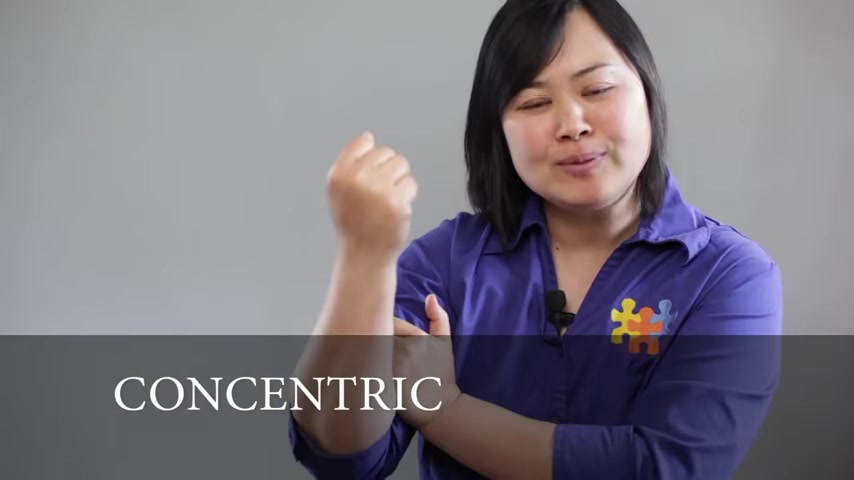
https://youtu.be/PHTUlwCnCe8?si=xrFpr5cGNPKQuCfs
Isotonic & Isometric Contractions

Let's talk about isotonic versus isometric contraction .
Uh When you learn a new language , it's so easy to get really confused .
Isotonic versus isometric isotonic gives you a real little hint in there .
It has the word tonic or tone in there .
When we talk about contractions , it's all about the muscle moving .
When we look at isotonic contraction , there's actually two kinds of contractions underneath .
There's an eccentric contraction and a concentric contraction , concentric contraction is what we use all the time when we're at the gym .
So let's take biceps brachii as our classic example .
I want you to feel it .
It's this muscle here .
A lot of times we do bicep curls there .
It is .
Its origin is on the super glenoid tubercle and the cor coid process , its insertion is the radial tuberosity on the radius .

When you feel that muscle belly and we get those muscle fibers to shorten and that's its job .
Its action is flexion of the elbow when we get it to shorten and you feel a bunch up underneath there , that's concentric contraction , concentric contraction , shortening of the muscle fibers .
Now let's go in the opposite direction .
It's working while those muscle fibers are getting longer and lengthening .
So when we look at isotonic contraction , we have concentric contraction and still working .
The muscle is still working .
We have centric contraction .
Now , when we think about isometric contraction , this is where you can take a cup of water , watch the joint angle .
It's gonna stay the same biceps still engaged .
And if I start to fill up that water , I'm gonna fill it up right to the top .
Is my muscle still working ?
Absolutely .
It's still working .
The muscle is contracting joint angles not changing .

So we see this all the time in yoga actually where you hold a pose and then the muscle fatigues because it's working for a long period of time .
So , isometric contraction is more muscle work applied more load , but no joint change under isotonic concentric contraction and eccentric contraction under isometric , maintaining joint angle , but increasing the workload .

Are you looking for a way to reach a wider audience and get more views on your videos?
Our innovative video to text transcribing service can help you do just that.
We provide accurate transcriptions of your videos along with visual content that will help you attract new viewers and keep them engaged. Plus, our data analytics and ad campaign tools can help you monetize your content and maximize your revenue.
Let's partner up and take your video content to the next level!
Contact us today to learn more.